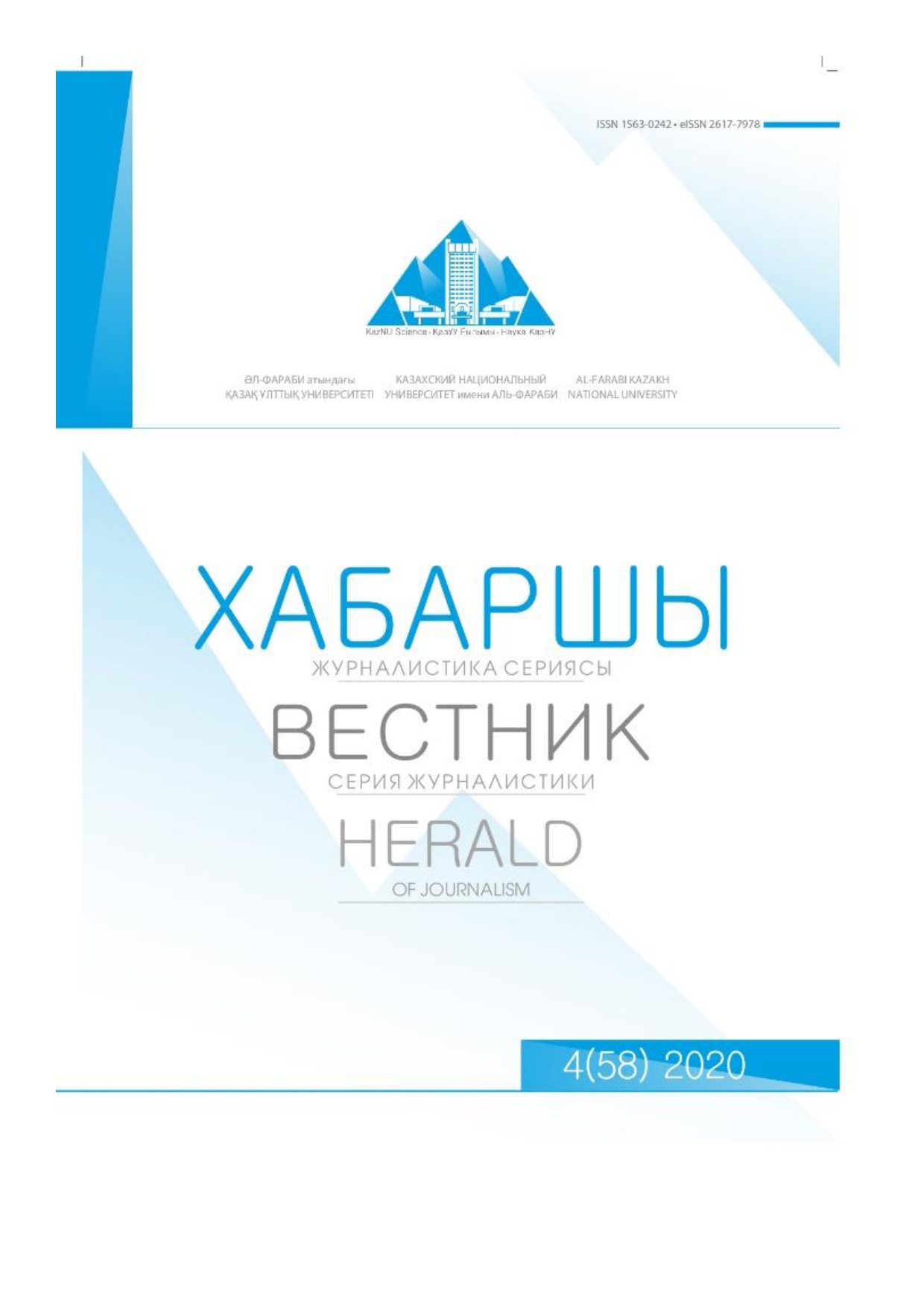Chokan Valikhanov and Oral Theory of Word Art
DOI:
https://doi.org/10.26577/HJ.2020.v58.i4.06Abstract
The article is devoted to the memory of Ch. Ch. Valikhanov and topical problems of oral theory-the object of modern intercultural communication. It raises questions about the style and genre of oral utterance, oral and stylistic techniques and the art of speech, which are necessary for students of genre theory and the art of journalism. The main purpose of the article is to identify the relevance of the sci-entist’s ideas in the light of the oral theory of Parry-Lord-the leading American researchers, which comes from the nature of not only genre forms of Kazakh folklore, but also functionally related stylistics and art of speech. The methodological value of both the research and the works of the scientist is revealed in the analysis of oral genre forms of folklore, stylistics and art of speech and taking into account the main method of Ch. Ch. Valikhanov, his view “from within the tradition itself”. This methodology takes into account the comparative studies and comparative-historical and typological, and the systemic methods and method of analysis. The main conclusion of the article is that the first Kazakh folklorist, Ch. Ch. Va-likhanov is at the origins of journalism, acts as a master of the essay. His “ Notes...», “Notes...”,” Essays...
“ require a closer reading: he foresaw many directions of modern oral theory and world folklore. These visionary ideas were based on his clear awareness of the unique value of centuries-old Steppe knowl-edge, an important part of which was the great oral epic and folklore of the Turks of the North Caucasus, Southern Siberia, Central and Central Asia. unified in its development, the integral steppe tradition of the art of speech first appeared in his works in all its genre and species diversity. such a holistic historical and ethnographic approach to the analysis of folklore and the art of speech of the turkic peoples has practical and methodological significance for both oral theory and world epic studies.
Кey words: genre, parry-lord oral theory, tradition, formula style, word art, steppe knowledge, genre form.
References
Абылкасимов Б.Ш. Стилистические приемы и средства в жанре толгау. В кн.: Жанр толгау в казахской устной поэзии.
– Алма-Ата: Наука, 1984. – 120 с.
Акатаев С. О специфике культуры кочевья. В книге «Кочевники. Эстетика: Познание мира традиционным казахским
искусством». – Алматы: Гылым, 1993. – 364 с.
Асан Қайғы. Таза мінсіз асыл сөз. Құрастырушы Е. Тұрсынов. – Алматы: Алматы кітап баспасы, 2014. – 112 бб.
Ауэзов М.М. Энкидиада: к проблеме единства миров кочевья и оседлости. В кн.: «Кочевники. Эстетика: Познание мира традиционным казахским искусством». – Алматы: Гылым, 1993. – 364 с.
Бектуров Ж. К характеристике лексического и образно-семантического фонда памятников казахской поэзии XV-XVII веков. В кн.: Исследования по истории и семантике стиха. Сборник научных трудов (меджуведомственный). – Караганда: издательство КарГУ, 1989. – 120 с.
Бес ғасыр жырлайды / Құрастырушы М. Мағауин. – Алматы: Жазушы, 1989. – 384 бб.
Валиханов Ч.Ч. Очерки Джунгарии. В кн.: Избранные произведения. – М.: Наука, 1986. – 416 с.
Валиханов, Ч.Ч. О формах казахской народной поэзии. В кн.: Избранные произведения. – М.: Наука, 1986. – 416 с. Валиханов Ч.Ч. https://shoqan.kz/incompleted/works_zametki_po_istorii/ Веселовский Н., https://znanija.com/task/31293246
Жаксылыков А. Художественный перевод и литературный процесс. – Алматы: Таңбалы, 2013. – 312 с.
Жанабаев К., Акберды У. Поэтический Словарь языка жырау XV-XVIII веков: термины родства и социальная лексика.
– Семей, 2017. – 288 с.
Ибраев. Ш. Эпические формулы и поэтические средства «Китаби дедем Коркут». В кн.: Исследования по истории и
семантике стиха. Сборник научных трудов (меджуведомственный). – Караганда: издательство КарГУ, 1989. – 120 с.
Лорд А. https://vk.com/wall209887955_2131
Мелетинский Е.М. Современные теории происхождения эпоса. В кн.: Происхождение героического эпоса: ранние
формы и архаические памятники. – М.: Издательство восточной литературы, 1963. – 463 с.
Наурзбаева А.Б. Жырау в коммуникативной стратосфере казахского традиционного общества: дискурс-анализ. Колл.
монография: Жырау: статус, функции, культура, мировоззрение. – Семей, 2017. – 325 с.
Негимов С.https://cyberleninka.ru/article/n/folklornye-materialy-v-tvorchestve-ch-ch-valihanova .
От авторов. Предисловие к книге «Кочевники. Эстетика: Познание мира традиционным казахским искусством». –
Алматы: Гылым, 1993. – 364 с. Предисловие, https://vk.com/wall209887955_2131
References
Abylkasimov B. Sh. (1984) Stilisticheskie priemy i sredstva v zhanre tolgau. V kn.: Zhanr tolgau v kazahskoj ustnoj pojezii
[Stylistic of the techniques and tools in the genre tolgau. in: tolgau genre in kazakh oral poetry]. Alma-ata: nauka, 120 p.
Akataev S. (1993) O specifike kul’tury kochev’ja. V knige «Kochevniki. Jestetika: Poznanie mira tradicionnym kazahskim
iskusstvom» [On the specifics of nomadic culture. In the book “Nomads. aesthetics: knowledge of the world by traditional kazakh art”]. Almaty: Gylym 364 p.
Asan Kaygy (2014) Taza mіnsіz asyl soz. Kurastyrushy E. Tursynov [ Pure perfect noble word. The Author is E. Tursunov].
Almaty: Almaty kitap publishing house,112 pp.
Auezov M. M. (1993) Enkidiada: k probleme edinstva mirov kochev’ja i osedlosti. V kn.: «Kochevniki. Estetika: Poznanie mira
tradicionnym kazahskim iskusstvom». [Encoded: the problem of the unity of the worlds nomadic and settled. in the book: “nomads.
aesthetics: knowledge of the world by traditional kazakh art”]. – Almaty: Gylym, 364 p.




